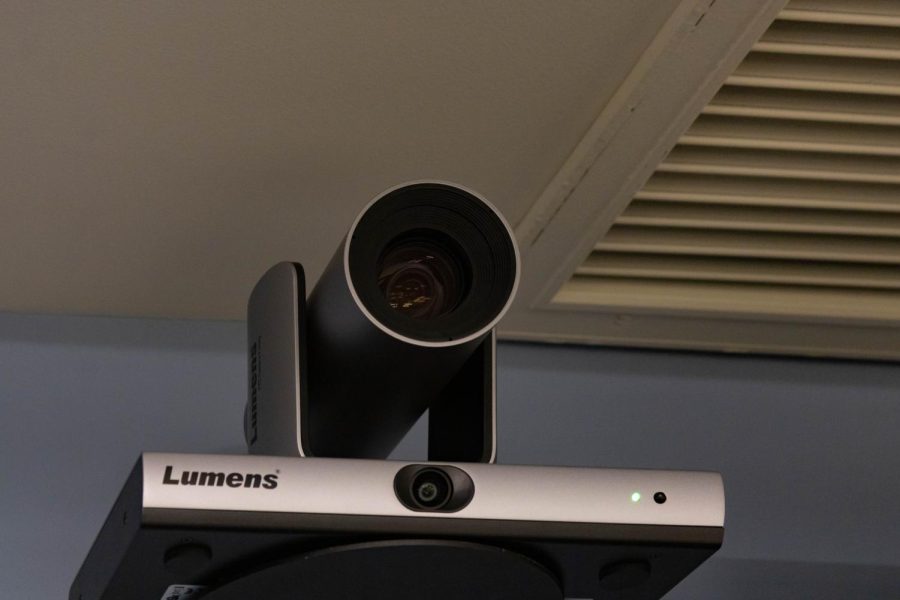New class system HawkFlex
Strategically placed cameras let students at home see everything in the on-campus classroom.
August 29, 2022
AACC will continue to test a new class type this fall that allows students to choose each day if they want to attend class in person or virtually.
The new class type is called HawkFlex, and the college plans to roll it out in 11 classrooms in the spring semester. Those classrooms are upgraded with cameras and microphones on the ceiling that allow virtual students to see and hear the whole classroom, but some students will be there in person.
“It is the opportunity for students to attend class face to face or to attend class synchronously via Zoom,” business professor Shad Ewart, who tried out HawkFlex last fall, said. “Students have that option every single day.”
The pilot program for HawkFlex, which is based on the HyFlex model at other colleges, began a year ago.
The college outfitted two rooms for HawkFlex for the first semester of the pilot.
Colleen Eisenbeiser, dean of learning advancement and the virtual campus, said the faculty who have tried the program have “loved it.”
“What I like about it is the students are always able to kind of stay on track,” said Loraine Frey, an academic coordinator in the physical therapy assistant program. “And it also gives the students the opportunity to make a choice. So I’m not requiring them, you must be in front of me. We require them to have to be in attendance. But it gives the students a nice choice.”
Certain classes, such as lab sciences, may also have mandatory in-class days as well as days when students can choose how they attend.
“You could have a hybrid class where everybody has to come on Tuesdays,” Eisenbeiser said. “Think of a science class where you’re going to be doing some kind of experiment and stuff like that. So maybe that’s the class you have to come in and experiment with. So you have to be there. Everybody’s got to be face to face.”
Frey said HawkFlex professors can mix and match the technology to suit the lesson.
“We can send them off in breakout rooms,” Frey said. “I can have a [Zoom] breakout room where the students in the classroom actually can be part of that breakout room. So they’re still interactive.”
Students who have taken HawkFlex classes praised the flexibility the format allows.
Raquel Kromer, a second-year physical therapy assistant student, said the format gives students flexibility with how they attend.
“You can decide whether to attend, by the convenience of being at home or, you know, maybe you can just go to class when you feel like you want to go,” Kromer said.
Angela Bartoe, another second-year PTA student, said that flexbility is useful when students are ill.
“With all the Covid cases and things going on, if you’re not feeling well, they always say at work, ‘Don’t come to work,’” Bartoe said. “Nobody wants that.”
Eisenbeiser said the format may not suit every class.
“I think that there are some classes that are clearly better taught in certain modalities than others,” Eisenbeiser said. “Just like I think some students are better in certain modalities than others and some faculty are, too.”
Ewart agreed.
“If you have a class where, OK, we have a mandatory meeting … [at] this time, or we need to be in the law library at this time on this day, you shouldn’t do it.”
Faculty will be able to choose whether they wish to teach a HawkFlex class starting next semester.












